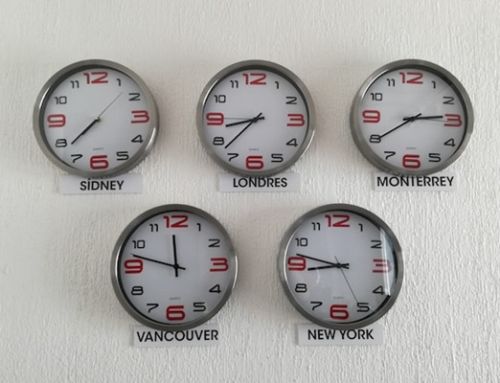The business cycle is changing. Each week brings new reports of layoffs, restructurings, and all-hands-on-deck strategy revisions, some proactive and some reactive. If you are a CEO, these trends are energizing. You can forecast a more complicated and demanding near-term business climate. In reality, the business climate has been challenging and tough for years. The world has become more unstable and more unpredictable. So are the teams and their leaders. Those who can draw on deep sources of resilience are likely to emerge stronger than those who cannot.
What exactly is team resilience?
Team resilience is a team’s ability to tolerate and overcome stresses to improve performance. It assists teams in dealing with and recovering from obstacles. This group-level resilience only sometimes occurs when a team consists of people, each of whom is strong on an individual level. It is a team-level event.
Why is workplace resilience important?
According to RISING RESILIENT REPORT many organizations need to work to improve their overall performance and resilience. Having a resilient workforce benefits your organization in a variety of ways. It makes individuals more motivated, capable of dealing with change, and less prone to burnout. It also enhances employees’ general health. Resilience and workplace wellness are closely linked. Better mental health leads to decreased absenteeism, which improves job performance. Here are nine advantages of workplace resilience.
- Better handling of difficulties
- Better communication
- Less burnout and presenteeism
- Establishing a competitive business
- Making reasonable expectations
- Better collaborative relationships
- Available for upskilling and development
- Effective organization and time management
- Ready to give and receive support
The good news is that now employees that aren’t born with resilience can build this ability and flourish in the organization.
Image by creativeart on Freepik
Top five strategies to build team resilience:
If you want an effective team then it’s important to adopt good strategies for resilient groups. Now, look into five strategies to build team resilience during turbulent times.
Motivate internal & external open, frank communication:
Open, honest communication is necessary for resilient teams. Not only among teams and working groups but also externally to other teams within the organization. Moreover, to stakeholders outside the organization. Your team already has a common language; otherwise, it would not function. However, such language may be too primary, rigid, or conservative. It supports the necessary work, alone developing the competencies your team requires to flourish. Open and honest intra-team communication improves psychological safety. Be prepared for some opposition. If your team hasn’t previously practiced real change, it will only happen after some time. You’ll need to enable some unpleasant talks early on. If your money allows, feel free to hire an outside facilitator to get this project started. They’ll break the ice and provide a toolset to help you finish the task.
Breaking down internal barriers:
Internal discourse is only the beginning. To create a resilient team, you must promote empathy and understanding among your team members. Real communication, empathy, and comprehension are critical components of psychological safety. Your teammates don’t have to be best friends or even enjoy each other on a personal level. It will help if you put yourself in the shoes of others to face obstacles together. Traditionally, you can achieve this through deliberate, moderated talks. Essentially, team-building sessions in which individual members reveal portions of their personal lives. If this structure works for your team, that’s fantastic. If not, consider a strategy more suited to a remote or hybrid work environment, such as an internal team.
Teamwork roadmaps should be included in your strategy and workflows:
You need to establish psychological safety within your team. Take the more tactical step of planning your team’s activities for the next several quarters or years. Teamwork roadmaps guarantee that all team members know their roles, duties, and assignments. They should be aware of their coworker’s tasks. However, you should choose the format that works best for you. Specific teams prefer Gantt charts or team charters. Some prefer classic calendar layouts or flowcharts. If you want, go even further outside the box. It doesn’t matter what you use if you can put out achievable deadline goals that your team understands.
Encourage self-improvement:
Researchers took many surveys and according to the results, 70% of workers believe that their employers don’t do enough to avoid burnout and as a result they can’t be resilient. However, your goal must motivate team members to gain new skills, certificates, and capabilities. You must encourage them to strengthen their credentials and improves their performance. All these will make them more attractive outside your organization. It’s normal for leaders to be jealous of their team members. This is especially true in still-tight employment markets. Here employee retention is a top priority. The financial and time cost of replacing a valued person appears difficult. Yet, freezing your staff in amber is not in your best interests. You can provide tangible, valued incentives. There can be tuition refunds and on-the-clock time for side ventures. Moreover, focus on improving your systems and software. One of the top things that are circulating in organizations are paystubs for effective payroll management policy.
Identify permanent stressors on your team and in your organization:
This should come spontaneously from the genuine, honest interactions you’ll have with your team in the future. You may also collect input on internal stresses confidentially. These findings underscore the prevalent impact of stress and the profound burden it places on individuals across the nation.You can use confidential surveys and one-on-one discussions. The idea here is to understand better what’s holding your team back. It consists of factors both individually and collectively. Then, with information from the next task on this list, you’ll chart a path to more efficient, productive, and flexible work. However, this will be an ongoing undertaking. It is because new stresses occur all the time in unpredictable circumstances. It will be worthwhile to improve team confidence and creative capacity.
Note: Finally, team resilience is like a battery. You must maintain and refill regularly. Teams who use such procedures will find themselves more equipped. They will be eager to face any challenge throughout the year.






Leave A Comment